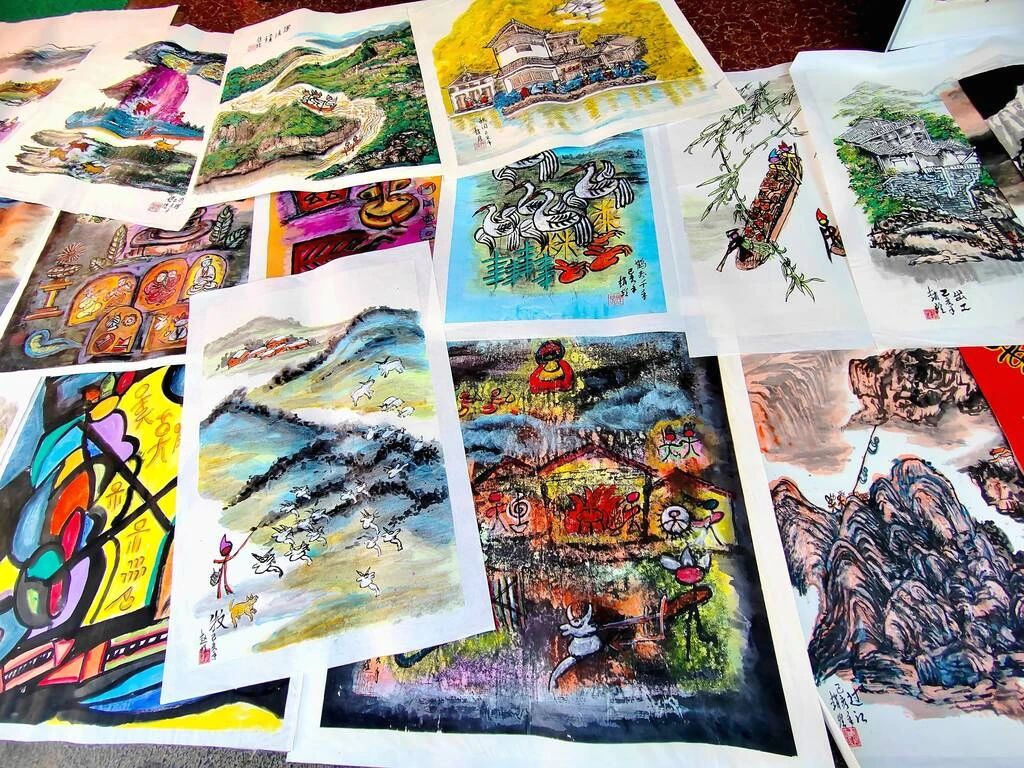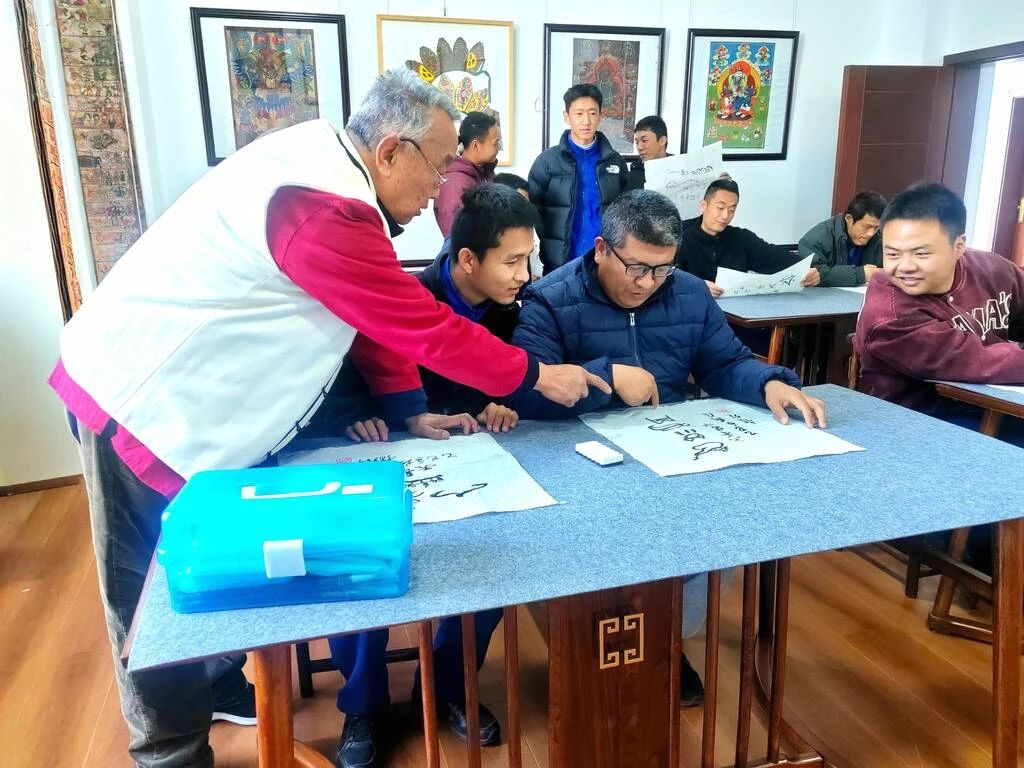The living art of Dongba: A master painter’s mission
At 76, Zhao Huang, a regional representative inheritor of the “Naxi Dongba Painting”—a treasured part of China’s national intangible cultural heritage—still begins each day painting. With bamboo pen and pigments gathered from the Jinsha River, he meticulously translates the Naxi ancestors’ reverence for nature and celebration of life onto canvas.

Zhao Huang begins his day with the Dongba painting.
Growing up in his family’s old house in Lijiang Ancient City, Zhao Huang was captivated by the Dongba painting scriptures treasured within. These enigmatic images sparked a lifelong passion. At 20, he sought out elder Dongba painters to learn their craft. Driven to master the art, he journeyed through Naxi villages in Yunnan and Sichuan, studying fragmented techniques found on Dongba wooden plaques, paper cards, and scrolls. He amassed a collection of 12 Dongba scriptures and over 60 Dongba paintings, providing invaluable resources for the study of this unique art form.
In 1976, Zhao Huang’s passion for Dongba culture led him to leave his teaching career and fully embrace Dongba painting. He immersed himself in study at the Lijiang City Dongba Culture Research Institute and the Dongba Museum, and further honed his skills at the Sichuan Academy of Fine Arts and the Yunnan Arts University. He blended modern artistic techniques with traditional Dongba art, resulting in a unique, bold, and expressive style. Since March 2019, Zhao Huang has operated an ethnic cultural inheritance studio within the Gucheng District Federation of Trade Unions, offering instruction to the community and running weekly programs that bring intangible cultural heritage to local schools, training talented apprentice.

The Dongba painting is created by Zhao Huang.
“Dongba painting,” Zhao Huang emphasizes, “is not a museum piece; it is a living heritage that demands our active participation—our hands, our hearts, and our commitment to its continuation.” Recognizing this, the Gucheng District has established heritage centers in primary and secondary schools under the Shuhe Educational Office, such as Huangshan Primary School, since 2013. These centers employ representative inheritors of intangible cultural heritage to introduce young people to rich ethnic traditions.
Exhibited extensively both domestically and internationally, Zhao Huang’s Dongba paintings have earned widespread recognition for their profound cultural depth and unique artistic expression. His works “God of Seasons” and “Love” perfectly illustrate his style, combining the raw power of ancient nature god totems with the compelling tension of modern aesthetics. These works were awarded a bronze medal at the G20 International Cultural Exchange Painting and Calligraphy Exhibition, part of the 10th China (Beijing) Cultural and Creative Industries Expo in 2015.

Zhao Huang teaches others in Dongba writing.
“I am simply lending contemporary eyes the vision of our Naxi ancestors,” Zhao Huang explains. Recognizing that each generation serves as a link in the chain of civilization, he expresses his hope that young people will carry the torch and ensure that Naxi Dongba painting continues to flourish.
Text by Li Tiecheng and He Xueyuan
Translated by YNTA